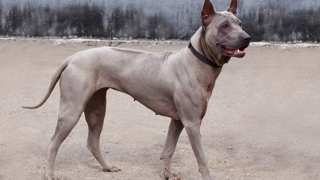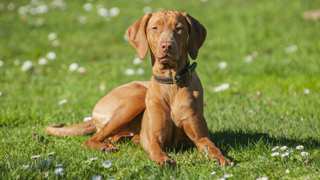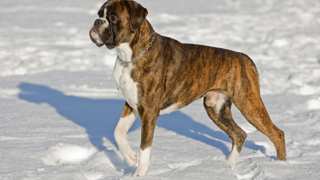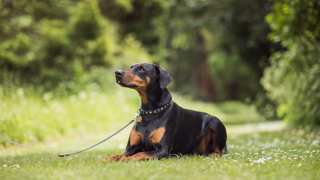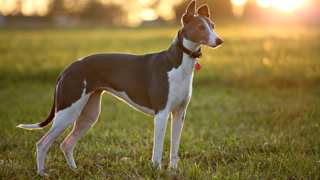As a slim, athletic breed, the ideal Mudhol Hound diet can be compared to that of a marathon runner: plenty of proteins and carbohydrates for energy, vitamins and minerals for digestive and immune health, and omega fatty acids for coat and skin health. One interesting attribute of this breed is its low percentage of body fat--which, like its Greyhound cousin, makes a Mudhol look almost emaciated and unhealthy. This causes some owners to try and "fatten up" their Mudhols by feeding the dog extra food, when doing so isn't necessary. Mudhol Hounds typically look incredibly thin, so owners shouldn't worry.
This slim physical makeup, though, means Mudhol dog food will need to be high-quality, because this food type will have the balanced nutrition that a Mudhol Hound and its high metabolism need. The best food for Mudhol Hounds is premium dry food like Orijen Adult or Wellness CORE; cheap, generic dog food is not recommended for these dogs, because it contains mostly empty "filler" ingredients that simply won't sustain your Mudhol Hound for the long term.
The typical adult Mudhol Hound, depending on its age, size, and activity level, will need about three cups of dry food per day, divided into two meals. Mudhol pups, again depending on their age, will need a little less: about two cups per day, divided into three meals (not two) until nine months old. For more info about feeding a Mudhol Hound from puppyhood through maturity, see this chart:
Mudhol Hound Feeding ChartDog AgeDog WeightFood TypeAmountFrequency2 Months12 lbsDry (Puppy formula)0.3 cups3x/day3 Months20 lbsDry0.5 cups3x/day6 Months30 lbsDry0.7 cups3x/day9 Months40 lbsDry* (Puppy/Adult)1.25 cups2x/day12 Months+50 lbsDry (Adult formula)1.5 cups2x/day*--Around this time, transition to adult food by first mixing in a bit of adult formula with the puppy formula. Over the course of a week, with each meal add a little more adult food to the mixture, until the dog is eating it entirely.
If possible, try to stick to the above-listed portions; though your Mudhol Hound could probably eat a lot more (and judging from its appearance, you might be tempted to feed the dog more!), the amounts are ample enough. And while this breed isn't very prone to obesity, constantly overfeeding your Mudhol Hound could result in the dog becoming overweight, leading to joint, digestive, and breathing problems. You can control your Mudhol's weight by establishing consistent feeding and exercise schedules, by not feeding the dog table scraps, and by not leaving food in its bowl all the time, thereby allowing the dog to eat anytime it wants. It's better to put your Mudhol's bowl down only at mealtimes, then pick it up 20 minutes or so after the dog begins eating.
If you're worried your Mudhol Hound is overweight, give the dog this test: you should be able to visibly see its ribs through its skin. If you can't, run a hand along the dog's side, and if you can't easily feel ribs, it's diet time. Decrease your Mudhol's daily food consumption by one-fourth, and add an extra walk, jog, or play period to its daily exercise schedule.

